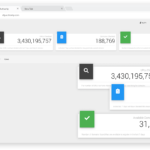Looking to buy a new home? As exciting as the journey may be, finding the best mortgage rates can sometimes feel like searching for a needle in a haystack. But fret not, because in this article, we’ll guide you through the process of finding the best mortgage rates that suit your needs. Whether you’re a first-time homebuyer or a seasoned pro, these tips and tricks will help you navigate the complex world of mortgages and secure the best rates for your dream home.

Factors to Consider Before Applying for a Mortgage
Evaluate Your Financial Situation
Before applying for a mortgage, it’s crucial to evaluate your financial situation. Take a close look at your income, expenses, and overall financial goals. This will help you determine how much you can afford to borrow and repay each month. Consider factors such as your current salary, job stability, and any other sources of income you may have. Additionally, take into account your monthly expenses, including bills, debt payments, and living costs. By thoroughly assessing your financial situation, you can make informed decisions about finding the right mortgage for you.
Check Your Credit Score
Checking your credit score is an essential step before applying for a mortgage. Your credit score provides lenders with an understanding of your creditworthiness and helps determine the terms of your mortgage, including the interest rate. A higher credit score generally translates to better loan terms, such as lower interest rates and lower fees. It’s essential to review your credit report for any errors or discrepancies that could negatively impact your score. By doing so, you can address these issues and potentially improve your creditworthiness before applying for a mortgage.
Understand Your Loan Options
When considering a mortgage, it’s crucial to understand the various loan options available to you. There are several types of mortgages, including fixed-rate mortgages, adjustable-rate mortgages, and government-insured loans. Fixed-rate mortgages offer stability with a consistent interest rate over the loan term, while adjustable-rate mortgages have fluctuating rates that can change over time. Government-insured loans, such as FHA loans, are backed by the government and often have lower down payment requirements. Researching and understanding these loan options will help you make an informed decision based on your financial situation and future plans.
Understanding Mortgage Rates
What are Mortgage Rates
Mortgage rates refer to the interest rates charged on a mortgage loan. This rate determines the cost of borrowing money to purchase a home. Mortgage rates can vary depending on several factors, including the borrower’s creditworthiness, loan amount, and current market conditions.
How Mortgage Rates are Determined
Mortgage rates are determined by various factors, including the overall state of the economy, inflation rates, and the bond market. Lenders also consider the borrower’s credit score, debt-to-income ratio, down payment amount, and loan term when determining the interest rate. In general, borrowers with higher credit scores and lower debt-to-income ratios will qualify for lower interest rates.
Types of Mortgage Rates
There are different types of mortgage rates available to borrowers. Fixed-rate mortgages have a set interest rate throughout the loan term, providing stability and predictability in monthly payments. Adjustable-rate mortgages, on the other hand, have interest rates that can change over time, often after an initial fixed-rate period. These rates are usually tied to an index, such as the U.S. Treasury Bill rate or the London Interbank Offered Rate (LIBOR).
Researching Different Lenders
Compile a List of Lenders
Before choosing a lender, it’s important to compile a list of potential options. Research banks, credit unions, and online lenders to find reputable institutions that offer competitive mortgage rates. Consider reaching out to friends, family, and colleagues for recommendations based on their own experiences.
Research Lender Reviews
Once you have a list of potential lenders, it’s important to research their reputation and customer reviews. Look for feedback from previous borrowers to gain insights into their experiences with the lender’s customer service, communication, and overall satisfaction. Online review platforms and consumer reporting bureaus are valuable resources for gathering this information.
Compare Lenders’ Offerings
When comparing lenders, it’s crucial to look beyond just the interest rate. Consider factors such as loan terms, closing costs, and any additional fees they may charge. Evaluate the lender’s responsiveness, knowledge, and willingness to work with you throughout the mortgage process. By comparing multiple lenders, you can ensure you find the one that offers the best terms and fits your needs.
Consider Local and Online Lenders
Both local and online lenders have their advantages and disadvantages. Local lenders often provide personalized service and may be more familiar with local housing markets and regulations. Online lenders, on the other hand, may offer convenience, competitive rates, and faster approval processes. Consider your preferences, as well as the level of communication and support you require, when deciding between local and online lenders.
Determining Your Eligibility
What Lenders Look for in Borrowers
Lenders assess several factors to determine the eligibility of borrowers. These include creditworthiness, debt-to-income ratio, employment history, and down payment amount. Lenders will typically request documentation such as pay stubs, tax returns, bank statements, and credit reports to evaluate these factors. Demonstrating a history of responsible financial management and a stable income can increase your chances of being approved for a mortgage.
Calculating Your Debt-to-Income Ratio
Your debt-to-income (DTI) ratio is a crucial factor in determining your eligibility for a mortgage. It is calculated by dividing your total monthly debt payments by your gross monthly income. Lenders generally prefer a DTI ratio of 36% or lower, although some may accept higher ratios depending on other factors. Lowering your DTI ratio before applying for a mortgage can improve your eligibility and loan terms.
Proving a Steady Income
Lenders require evidence of a steady income to ensure borrowers can afford their mortgage payments. This typically involves providing recent pay stubs, W-2s, and sometimes tax returns. Self-employed individuals may need to provide additional documentation, such as profit and loss statements or bank statements. Having a stable employment history and reliable income source will increase your chances of mortgage approval.
Saving for a Down Payment
Saving for a down payment is an essential aspect of preparing to apply for a mortgage. The down payment amount is a percentage of the home’s purchase price that the borrower pays upfront. The higher the down payment, the lower the loan-to-value ratio and potentially less risk for the lender. While a 20% down payment is often recommended to avoid private mortgage insurance (PMI), there are loan options available with lower down payment requirements. Saving for a down payment demonstrates financial discipline and increases your chances of mortgage approval.

Considering the Loan Term
30-year Fixed-rate Mortgage
A 30-year fixed-rate mortgage is one of the most common loan terms. With this mortgage, the interest rate is fixed for the entire 30-year duration. This provides stability in monthly payments and is suitable for borrowers who plan to stay in their home for a long period. However, it’s important to note that a longer loan term typically results in higher interest costs over time.
15-year Fixed-rate Mortgage
A 15-year fixed-rate mortgage is similar to a 30-year mortgage, but with a shorter term. This mortgage offers a lower interest rate and builds home equity faster due to the shorter repayment period. Monthly payments are higher compared to a 30-year mortgage, but overall interest costs are significantly lower. A 15-year mortgage is ideal for borrowers who want to pay off their loan quickly and save on interest expenses.
Adjustable-rate Mortgage
An adjustable-rate mortgage (ARM) has an interest rate that can change over time. Typically, ARMs have an initial fixed-rate period (e.g., 5 years) followed by periodic adjustments based on an index. These adjustments can result in higher or lower mortgage payments. ARMs suit borrowers who plan to sell or refinance their homes before the fixed-rate period ends, or those who anticipate interest rates to decrease in the future.
Assessing Points and Fees
Understanding Points and Discount Points
Points are fees paid to the lender at closing in exchange for a lower interest rate. Each point is equal to 1% of the loan amount, and paying points upfront can reduce the interest rate over the loan term. Discount points function similarly, allowing borrowers to “buy down” the interest rate for a lower monthly payment. It’s essential to calculate the breakeven point to determine if paying points is financially beneficial in the long run.
Origination Fees
Origination fees are charges imposed by the lender for processing and closing the mortgage loan. These fees can include application fees, underwriting fees, and administrative costs. Origination fees typically range from 0.5% to 1% of the loan amount. It’s important to compare origination fees among lenders to find the most cost-effective option.
Other Closing Costs
In addition to points and origination fees, borrowers need to consider other closing costs when applying for a mortgage. These costs can include attorney fees, appraisal fees, title insurance, escrow fees, and recording fees. Closing costs can vary depending on the location of the property and the loan amount. It’s crucial to review the Loan Estimate provided by the lender, which outlines all closing costs, to ensure there are no surprises during the closing process.

Negotiating and Locking in the Rate
Negotiating with the Lender
Don’t be afraid to negotiate with lenders to secure the most favorable mortgage terms. You can discuss interest rates, closing costs, and other fees to potentially lower the overall cost of the loan. Research and compare rates from multiple lenders to strengthen your negotiating position. Be prepared to walk away if a lender is not willing to offer a competitive deal.
Rate Lock
Once you have found a favorable interest rate, you can consider locking it in. A rate lock is a commitment from the lender that guarantees a specific interest rate for a specified period. This protects you from potential rate increases while your mortgage application is being processed. Rate locks usually range from 30 to 60 days, and there may be fees associated with extending the lock if needed.
Float-down Option
Some lenders offer a float-down option that allows borrowers to take advantage of a lower interest rate if rates decrease before closing. This provides flexibility in case rates improve during the mortgage process. However, there may be additional fees associated with the float-down option, so it’s important to evaluate the potential savings against the cost.
Taking Advantage of Rate Buying Strategies
Timing Your Application
Timing your mortgage application can be crucial in securing the best possible interest rate. Keep an eye on current market conditions and economic indicators that influence mortgage rates. If rates are expected to decrease, it may be worth waiting to apply. Conversely, if rates are predicted to rise, applying sooner may be advantageous. However, accurately predicting interest rate movements can be challenging, so it’s important to consult with mortgage professionals or financial advisors for guidance.
Improving Your Credit Score
A higher credit score can help you qualify for lower mortgage rates. If your credit score is not where you want it to be, take steps to improve it before applying for a mortgage. Paying bills on time, reducing credit card balances, and avoiding new credit applications can positively impact your credit score over time. It’s also essential to review your credit report for any errors or inaccurate information that may be affecting your score.
Shopping Around for the Best Rate
Don’t settle for the first mortgage rate you come across. Shopping around and comparing rates from multiple lenders can help you find the best rate and loan terms for your financial situation. Be sure to obtain rate quotes within a short period to ensure the credit inquiries do not negatively impact your credit score. Consider using online mortgage rate comparison tools to simplify the process and identify potential lenders to consider.

Understanding APR
What is APR
APR stands for Annual Percentage Rate and represents the total cost of borrowing, including both the interest rate and any additional fees and charges associated with the loan. It provides borrowers with a more accurate representation of the true cost of the mortgage. The APR takes into account factors such as points, origination fees, and other closing costs. Understanding the APR can help you compare loans more effectively and make an informed decision.
How to Compare Loans Using APR
When comparing loans, it’s important to look beyond just the interest rate and consider the loan’s APR. This allows you to evaluate the cost of borrowing holistically. A lower APR indicates lower overall costs, while a higher APR signifies higher costs. However, it’s essential to consider factors such as loan terms, down payment requirements, and other loan features that may influence the APR. Comparing loans using the APR assists in identifying the most cost-effective loan option.
Getting Pre-approved for a Mortgage
The Benefits of Getting Pre-approved
Getting pre-approved for a mortgage can provide several advantages when searching for a new home. Pre-approval demonstrates to sellers that you are a serious buyer and have the ability to secure financing. It also gives you a better understanding of your budget and helps streamline the home-buying process. Additionally, pre-approval provides an advantage in a competitive market, as it allows you to make an offer quickly when you find the right property.
The Pre-approval Process
To get pre-approved, you will need to provide the lender with necessary documentation, including income verification, proof of assets, and your credit report. The lender will assess this information to determine your eligibility and provide a pre-approval letter stating the maximum loan amount for which you qualify. This process typically involves a hard credit inquiry, which may have a temporary impact on your credit score.
The Importance of Pre-approval
Obtaining pre-approval is an important step in the home-buying process. It provides you with a clear understanding of your budget, allowing you to focus your search on properties within your price range. Pre-approval also helps you avoid disappointment by ensuring you are looking at homes you can afford. Additionally, it gives you a competitive edge in a seller’s market, as sellers often prioritize offers from pre-approved buyers.
In conclusion, applying for a mortgage is a significant financial decision. By evaluating your financial situation, understanding mortgage rates, researching different lenders, determining your eligibility, considering the loan term, assessing points and fees, negotiating and locking in the rate, taking advantage of rate buying strategies, understanding APR, and getting pre-approved, you can navigate the mortgage process more effectively. Remember to thoroughly research and compare your options to find a mortgage that aligns with your financial goals and provides the best terms for your specific situation.






